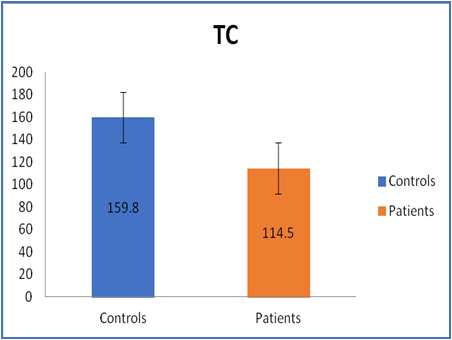Abstract
Malignant tumor of the squamous epithelium is known as the squamous cell carcinoma. It has been a major cause of morbidity and mortality worldwide. It is causing a major health problem across the world. 40 Patients were selected from those attending the outpatient department of Saveetha Dental College, and hospitals. Among them 20 are normal healthy individuals and 20 are patients with OSCC. Informed consent was obtained from the patient before sample collection. 5ml of fasting venous blood was collected and centrifuged in 3000rpm for 10 minutes. Then serum was separated and then it is analysed for serum cholesterol by Cholesterol esterase-Oxidase method, Serum triglycerides by colorimetric enzymatic method, HDL-c by Phosphotungtic acid method, LDL-c and VLDL-c were calculated by Friedwald’s formula. There is a significant increase in LDH (p<0.005) levels in OSCC patients when compared with healthy controls, by the influence of OSCC on LDH metabolism. Our findings suggest that assessment of LDH can be used an effective biochemical diagnostic tool for the manifestation of OSCC and other type of malignancy in patients.
Full text article
Authors

This work is licensed under a Creative Commons Attribution-NonCommercial-NoDerivatives 4.0 International License.

